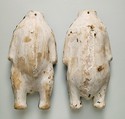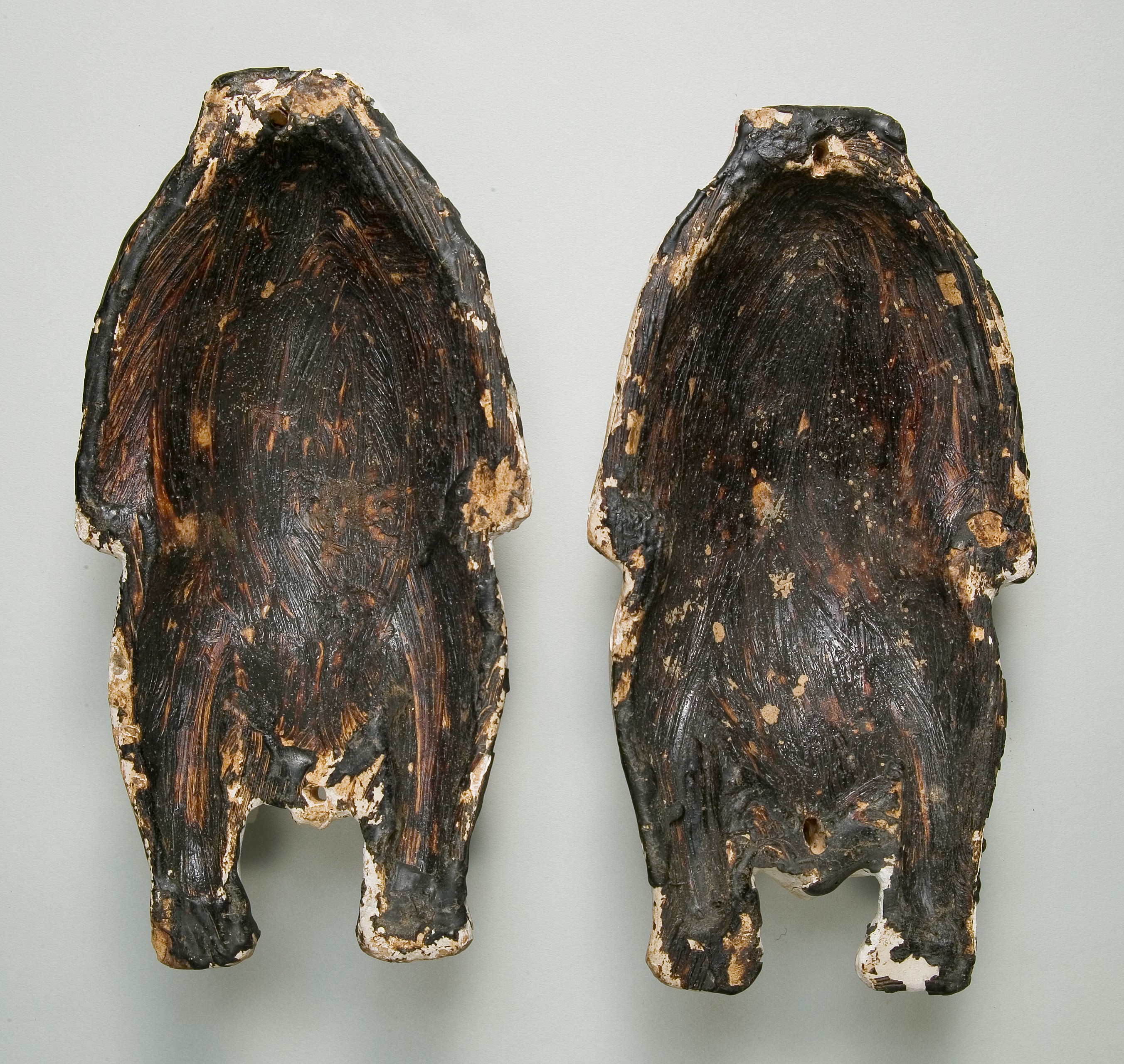Food Case Probably Containing a Preserved Pigeon
New Kingdom
During much of ancient Egyptian history, food and drink was placed in tombs to provide sustenance for the spirit of the deceased. In the late 17th and early 18th dynasties, foodstuffs were mummified and stored in boxes that echoed the shape of their contents. Carved in the shape of a pigeon, this container was plastered and painted white on the outside, with the interior coated with some sort of resin. Once the desiccated and linen-wrapped remains of a bird had been put inside, the two halves were stuck together and tied closed with a strip of linen.
This was one of a large collection of "victual mummies," which included a variety of meats and fowl, found in and around a small shaft tomb high in the cliffs of the Theban massif. About 10 meters away, hidden beneath a large rock, was the re-burial of an 18th Dynasty royal child named Amenemhat (see 19.3.207a, b); these supplies for the afterlife may have been part of his original burial.
Due to rights restrictions, this image cannot be enlarged, viewed at full screen, or downloaded.
This artwork is meant to be viewed from right to left. Scroll left to view more.



